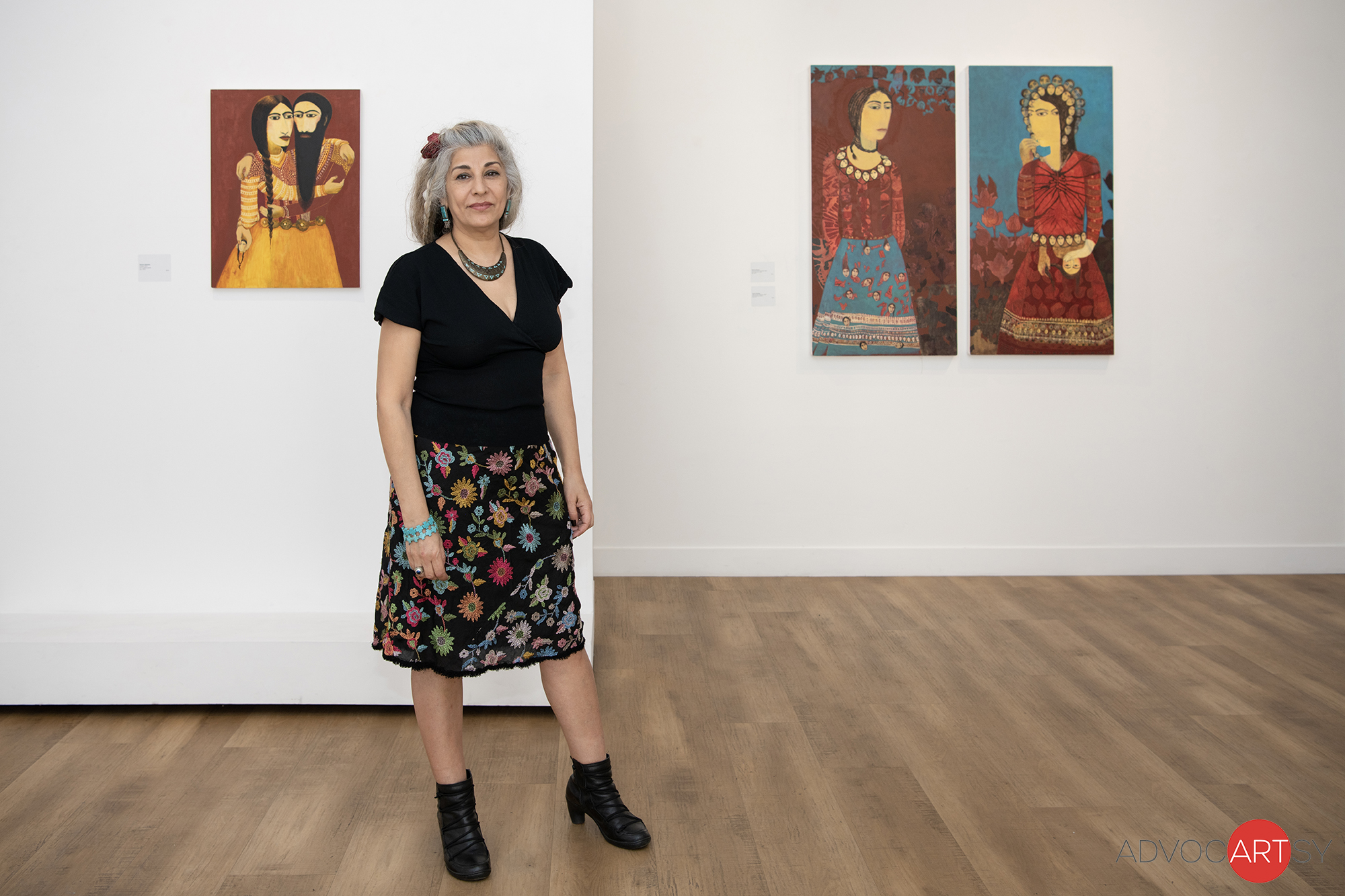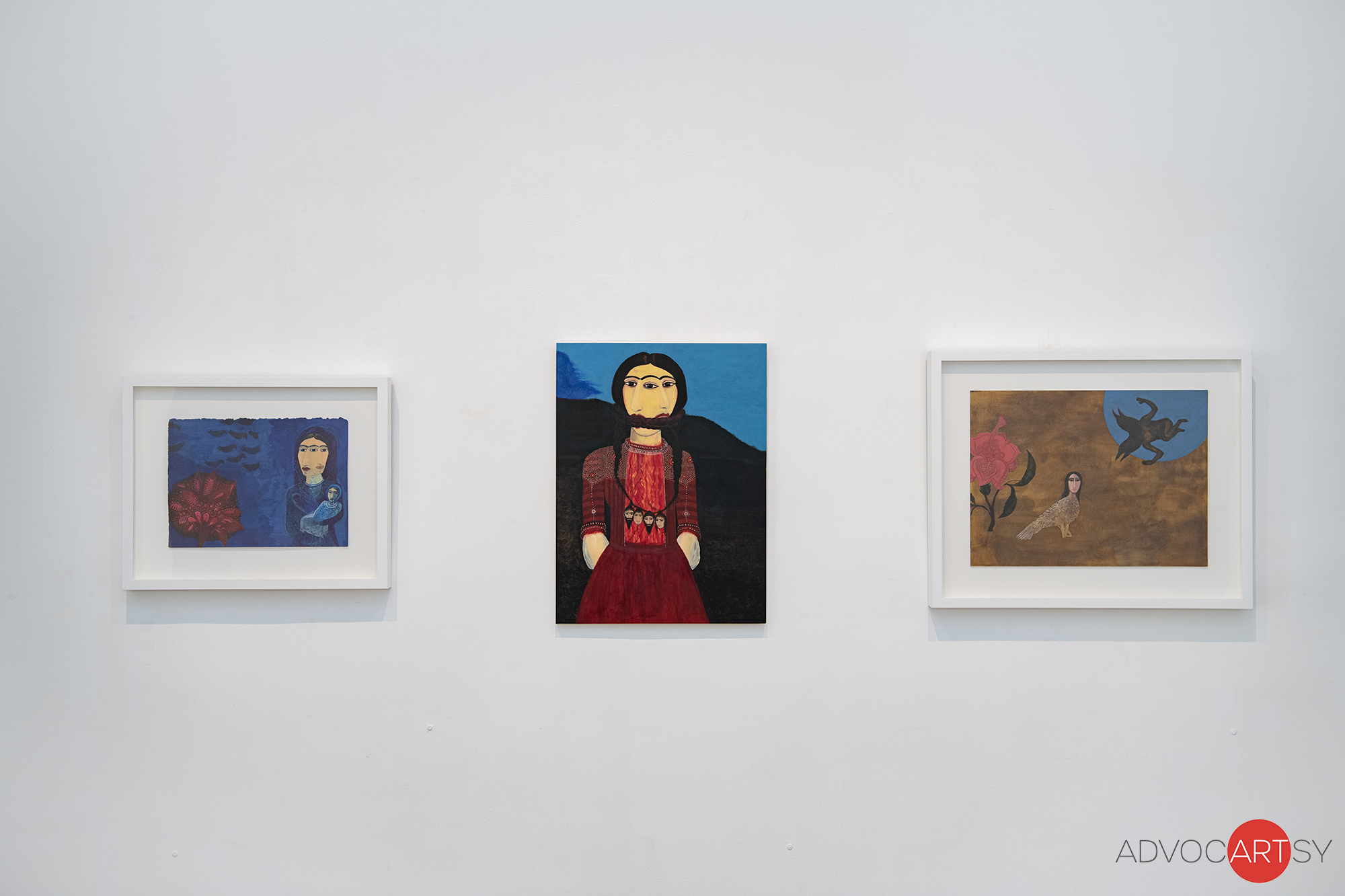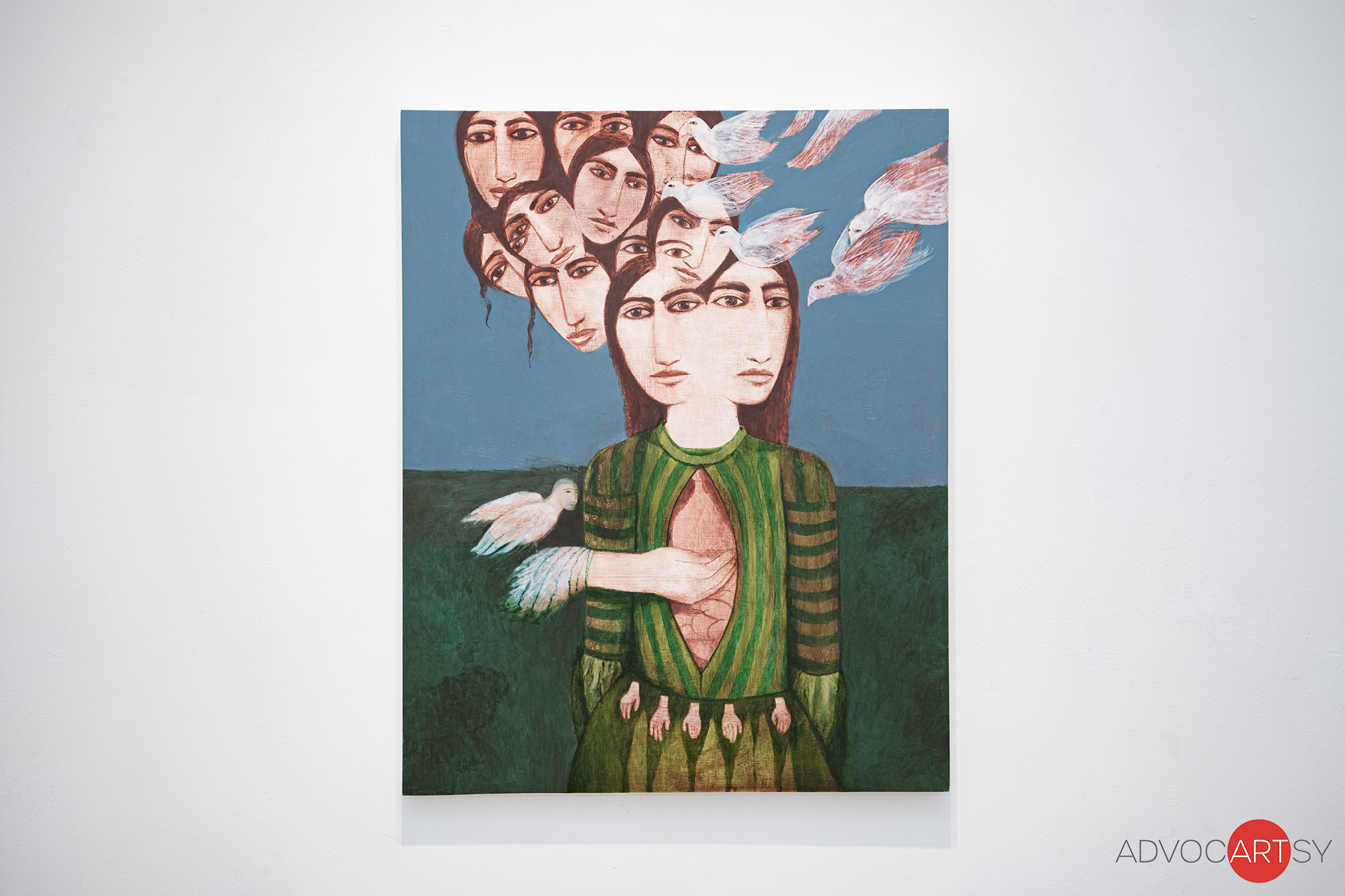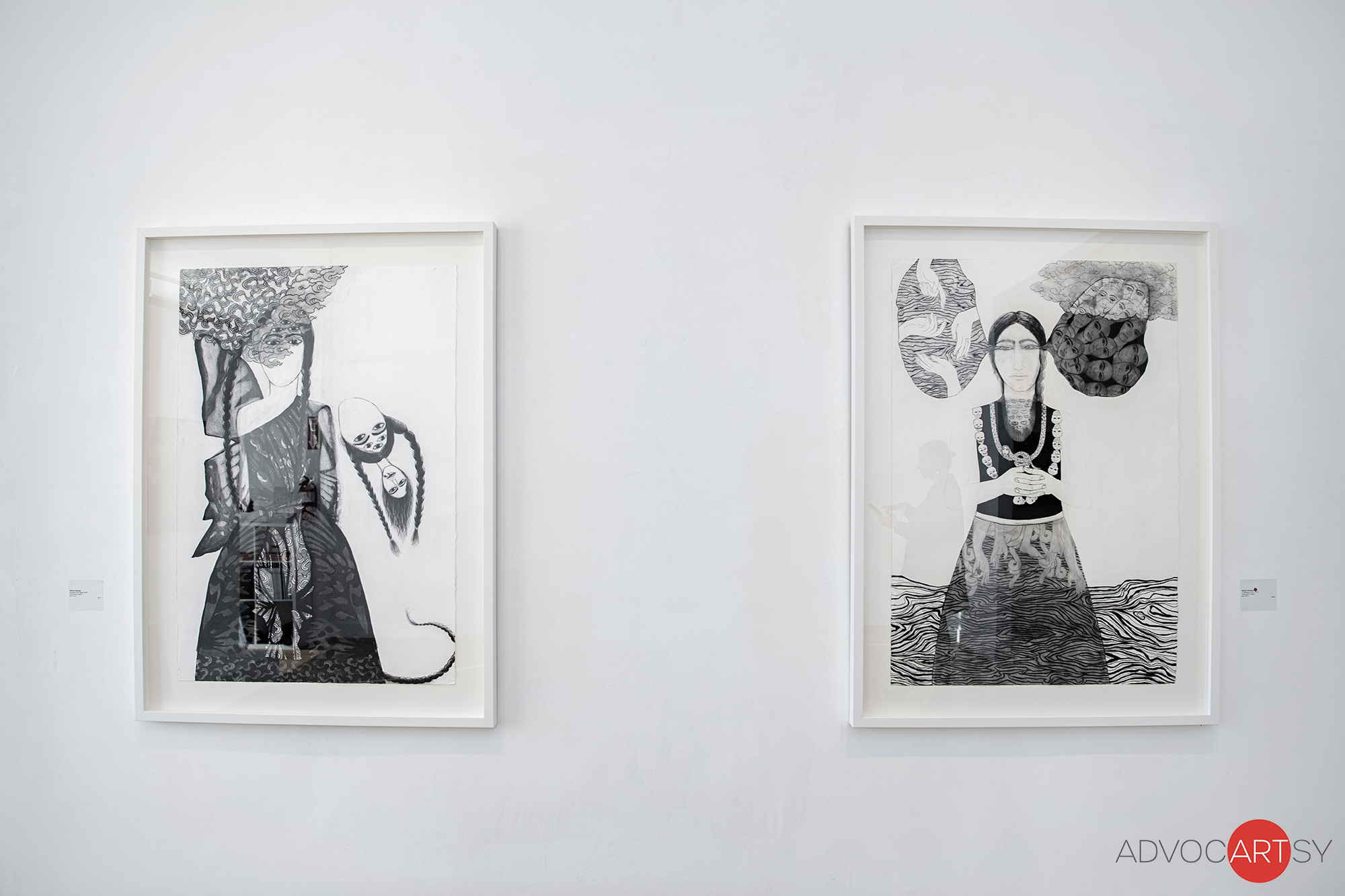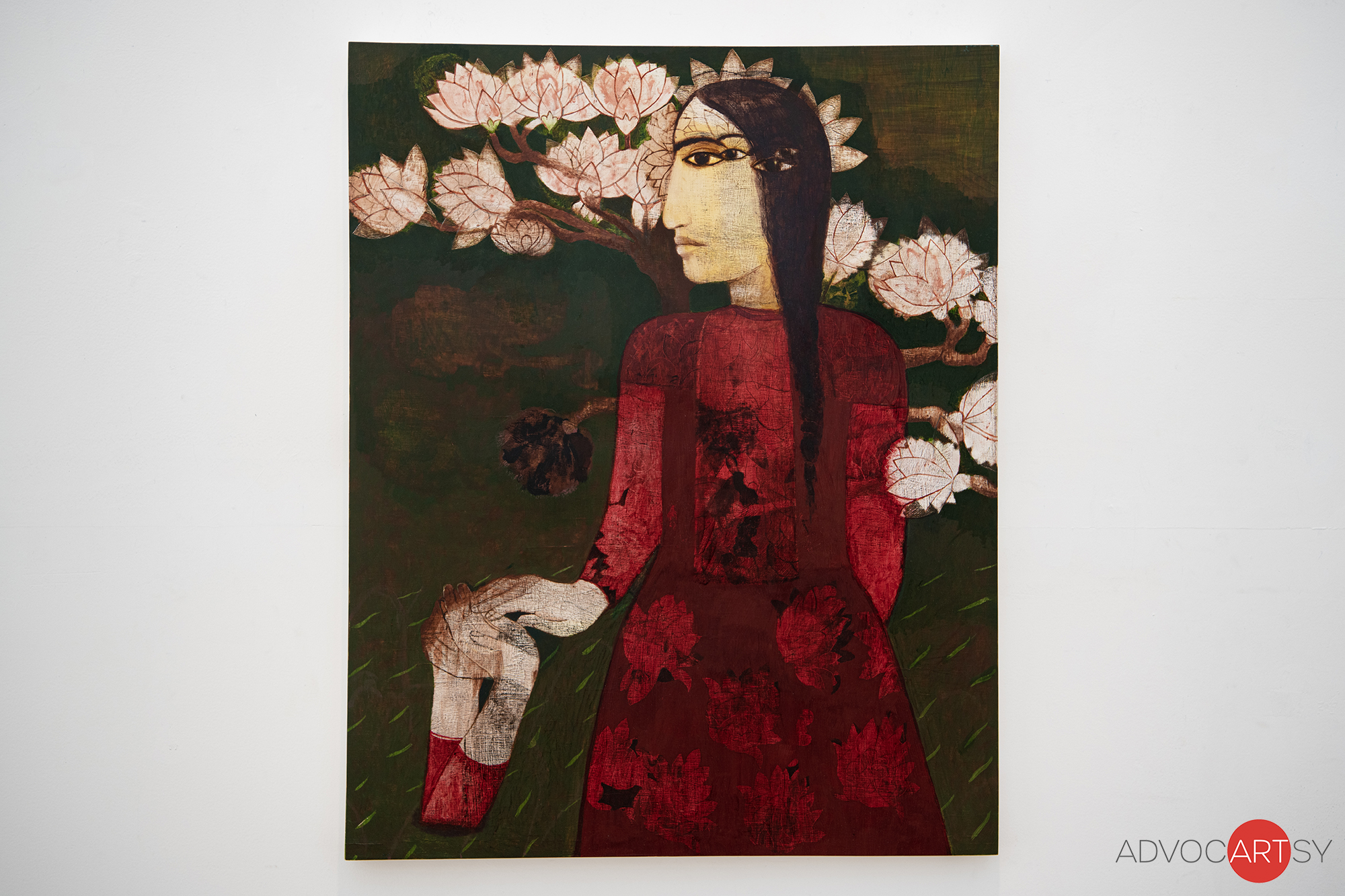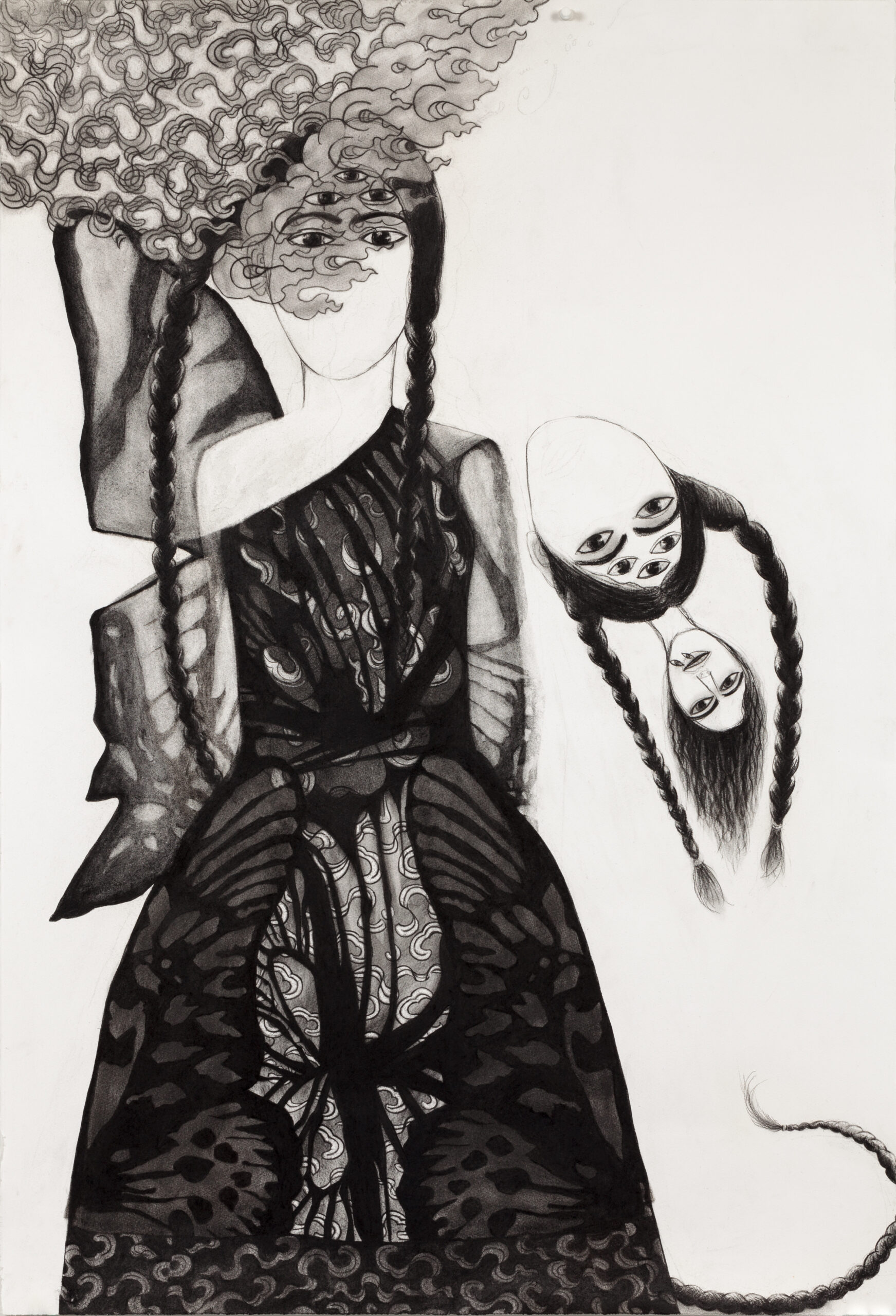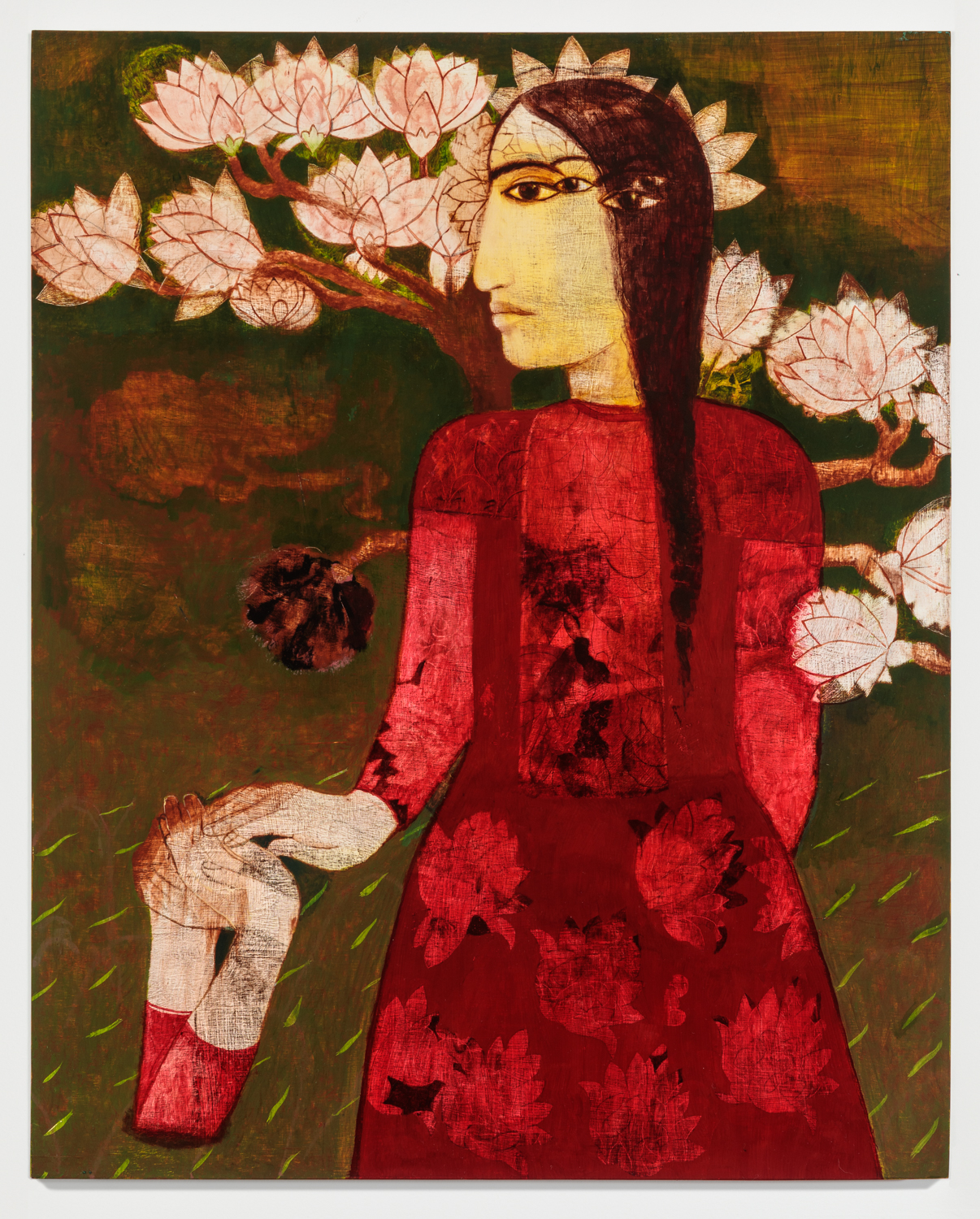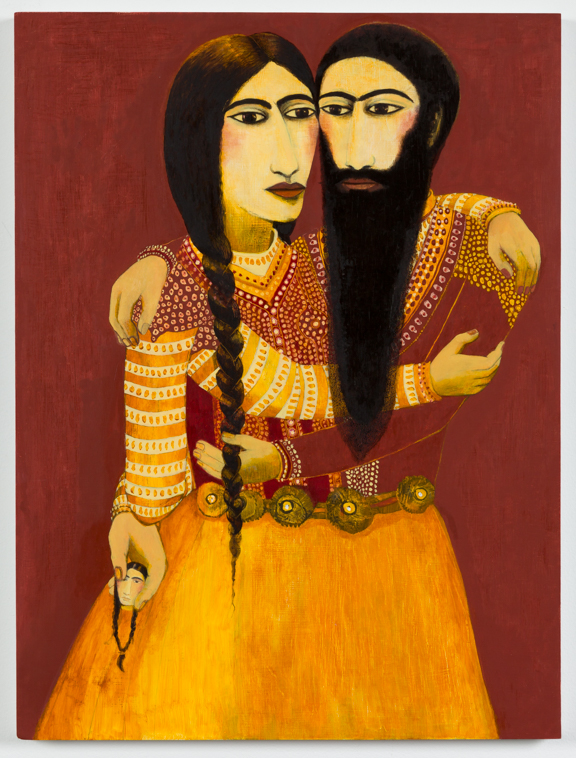Artist Statement
This solo show, Embodied Mythologies, includes painting and drawings from two bodies of
work. The first of which is the Chemical Hysterical drawing series, which began taking shape in
2009 and is ongoing, consisting of approximately 30 charcoal drawings over time. These
drawings were born out of a process of tracing fragments of personal and borrowed images,
which are then printed onto transparent paper and projected on an overhead projector. The
projector is used like the turntable of a record player to sample and layer fragments to generate
virtual collages. This process of unifying fragments is rooted in the Surrealists’ Exquisite Corpse
drawing experiments. The series title Chemical Hysterical, is taken from song lyrics by Radio
Head’s “OK Computer” album. It’s a poetic interpretation of the body as a biochemical, hormonal
system, triggering emotional and psychological states by which we are all overcome at times.
The second body of work grew out of the first, and manifested into larger paintings. The
drawings inform the paintings and vice versa. The subject of much of the work evolves out the
question: How do I create a figure that embodies the metaphysical aspects of being? The work
is an inquiry into how to reveal the figure as a psychological, emotional being, encountering its
various internal states: violence, ecstasy, epiphany, emotional disturbance, mental illness,
hypnotic/trance-like states, the dream state, mystical, and out of body experiences. To explore
these states of being, I looked towards Carl Jung’s theory of “the collective unconscious” to
uncover common and divergent ideas instilled in the human psyche.
The key to my approach of the figure lies in an idea taken from Dante’s Inferno: that
figures are “contorted according to their sin.” This implies an embodiment of psychological
states, where the physical states mirror psychological dilemmas. Rather than portraits, the
figures are archetypes, revealing themselves from the inside out; showing how it feels to be
human, and each specific identity helps uncover elements of a more universal Self. At times, the
figure is represented as many selves, or many aspects of one unified Self, expressing an array
of psychodynamic and existential realities. This kind of multiplicity can also be found in ancient
ideology and texts like the figure of the Many-Headed Angel in Mohamad’s Night Journey
manuscript and much of Hindu iconography.
Another central reference for much of my work, for the last three decades, is Qajar Court
painting (Iran, 18th/19th c.) The visual language of Qajar Court paintings reveals how the artists
were called to translate their visual language, in such a short span of time, and that the slippage
of language and ‘misinterpretation’ becomes the key to their intriguing appearance. These
artists also had to make an adjustment to the horizontal/ vertical paradigm shift from the
manuscript to large scale, wall hung, oil paintings. Just as the Iranian artists were translating
into the language of European painting, I find parallels in my own biography and efforts to
translate myself back into my indigenous culture, adapting Western painting techniques to the
language of Persian painting.
My work describes an allegorical realm, where the events and narratives of our lived
experience becomes incorporated into the body, or can cause its fragmentation. By fusing
disparate languages, myths and cultural conventions, I’m seeking an iconography that can carry
our current hybrid reality.
Artist Biography
toddler in 1967. Abbassy studied at the Canterbury College of Art before moving to New York
City to co-found the Elizabeth Foundation for the Arts, and the EFA Studio Center in 1998. Her
work responds to this migration and cultural shift by synthesizing Persian art with the Western
canon, creating a conversation around where Iranian art belongs in a predominantly Eurocentric
history of art. To find her place within the Western canon, Abbassy not only delves into a deep
examination of Eastern art history, but the psychological toll of the discourse between East and
West, Self and other, and the foreign and familiar.
In her visual lexicon, Abbassy utilizes the language of sacred art across cultures, flattening
her figures in a background without perspectival space to create an Iconic and allegorical figure.
In this way, the pictorial space reads as a psychological realm rather than a real place, where
figures are accompanied by recurring symbols and motifs. The conception and evolution of this
work has been shaped by the digital transfer of images globally, and the artist’s formal decision
to flatten perspective brings the paint and figure to light on the surface. The result is a strikingly
resonant and sometimes unsettling body of work that takes on a life of its own for each viewer.
Abbassy has exhibited internationally and her work has been acquired by institutions and
private collections such as the Metropolitan Museum of Art, the British Museum, LACMA and
the Afkhami Collection.
Related Press:
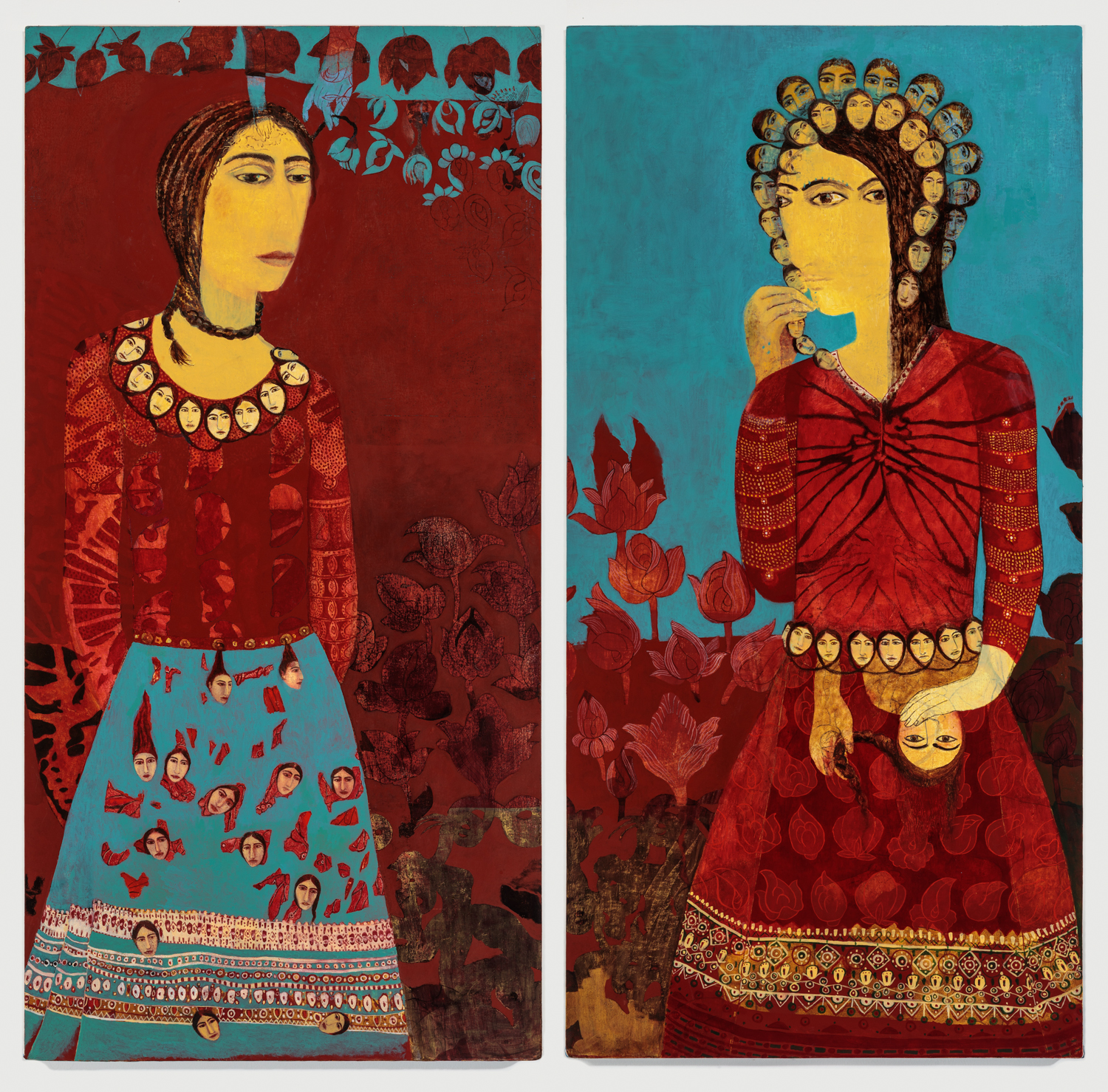
Artwork Preview
ADVOCARTSY is a contemporary art platform specializing in Iranian contemporary art.
ADVOCARTSY West Hollywood
434 N. La Cienega Blvd.
West Hollywood, CA
90048
Regular hours:
Wednesday – Saturday, 11 am to 5 pm

